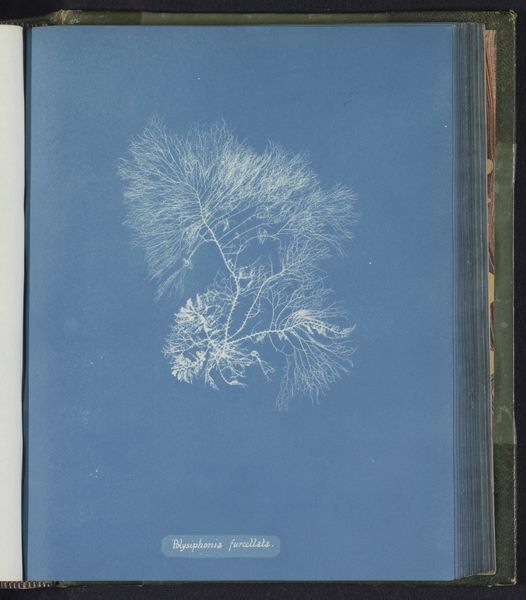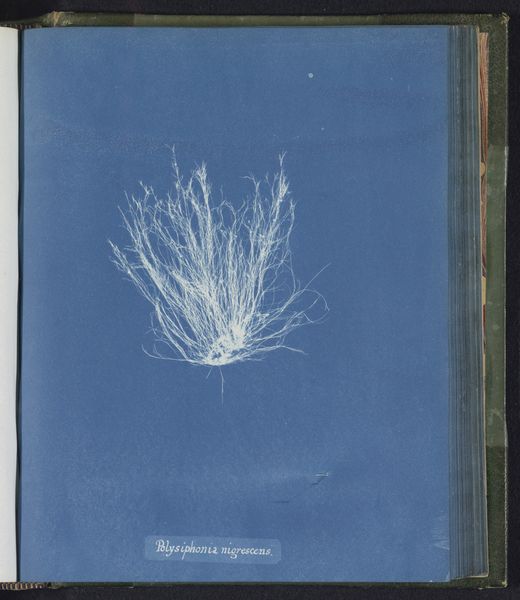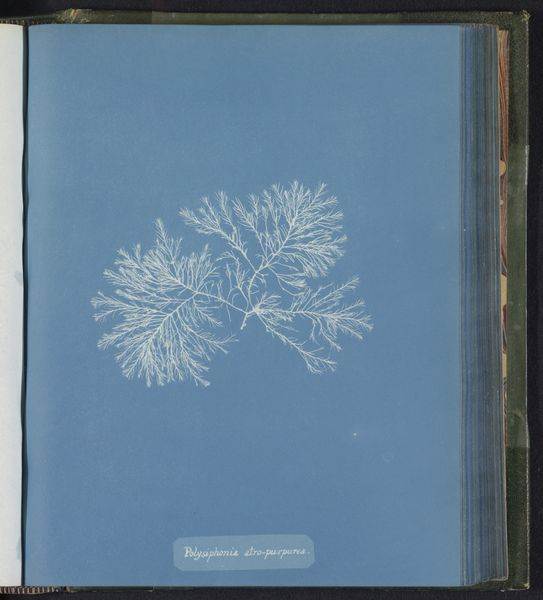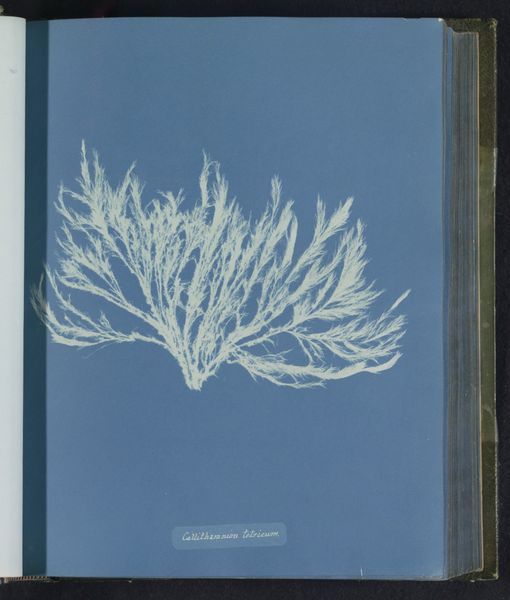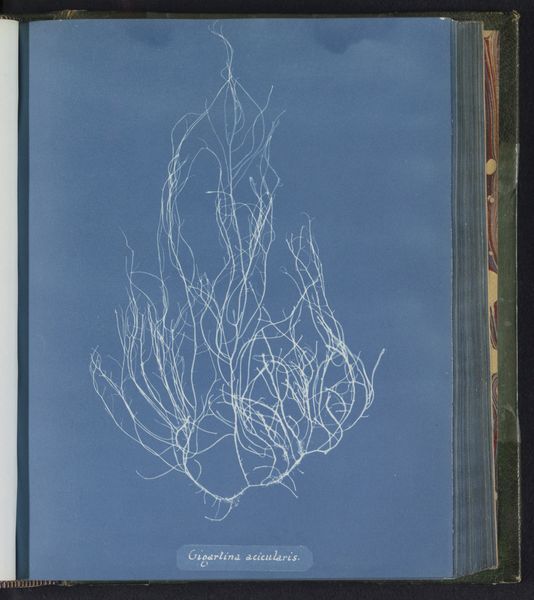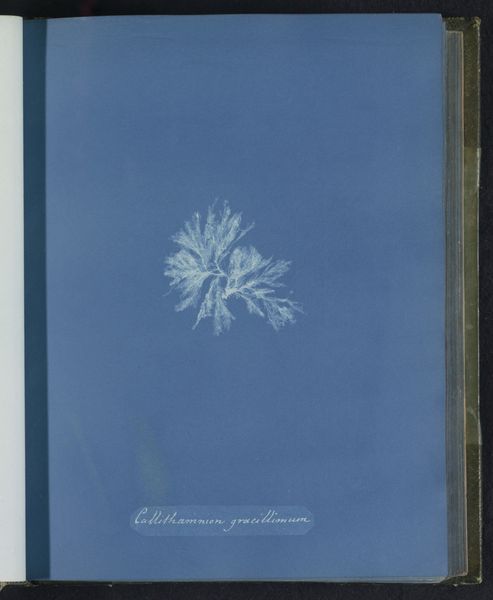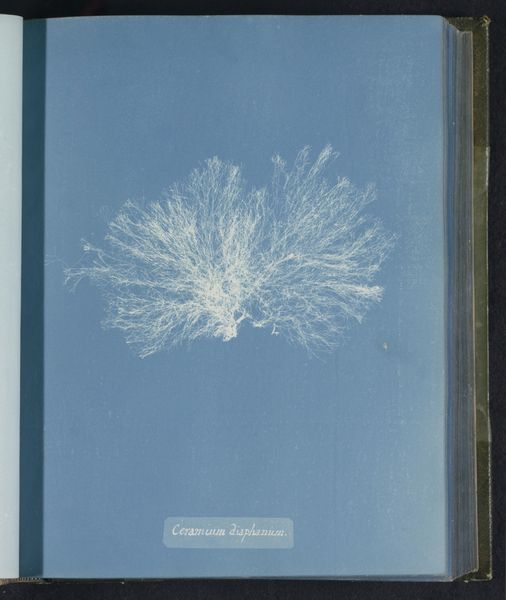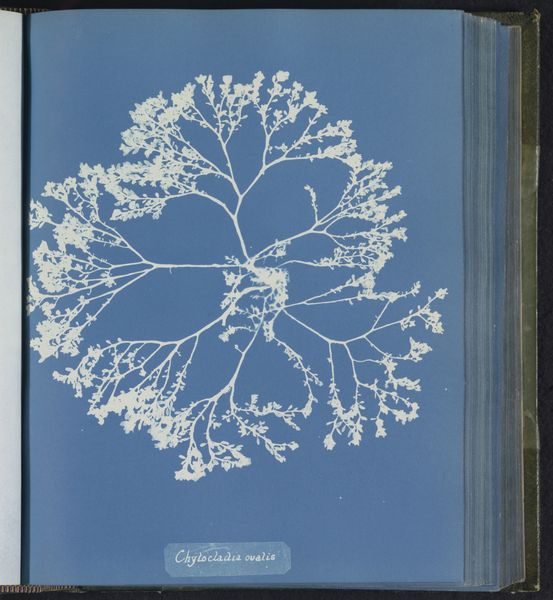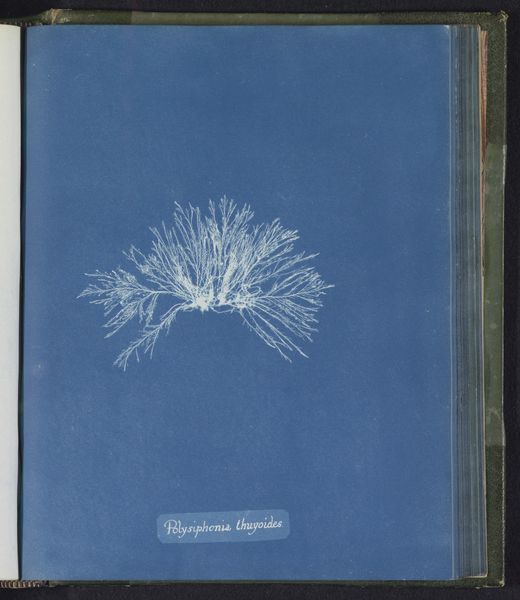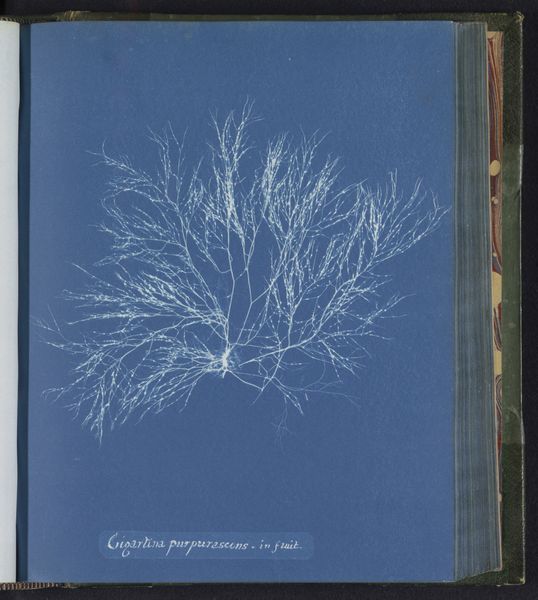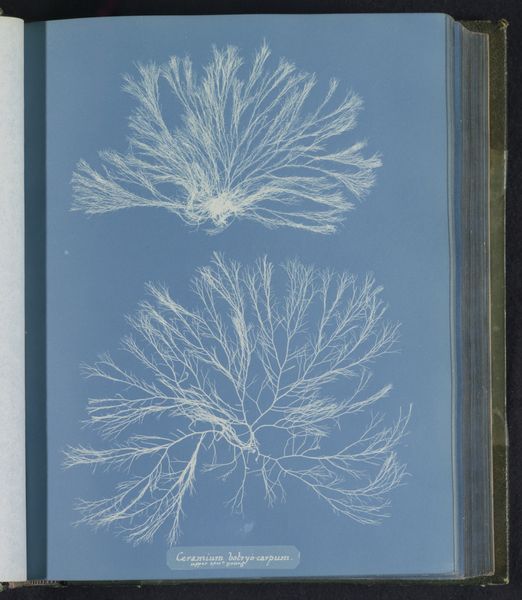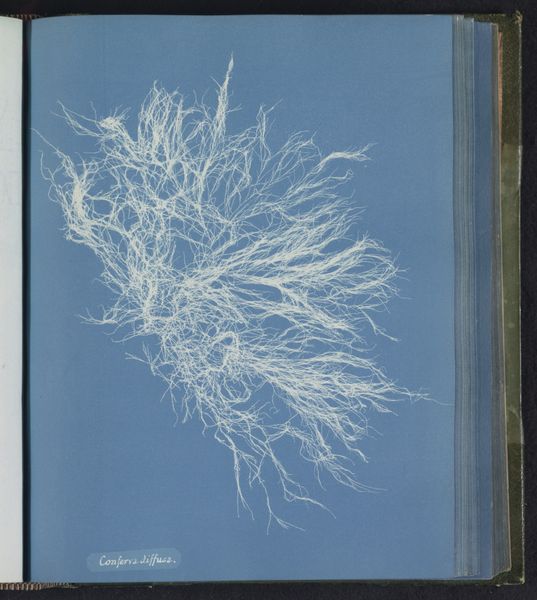
print, cyanotype, photography
#
still-life-photography
# print
#
cyanotype
#
photography
#
line
#
realism
Dimensions: height 250 mm, width 200 mm
Copyright: Rijks Museum: Open Domain
Curator: This striking cyanotype print showcases Gelidium corneum, a type of red algae, created by Anna Atkins sometime between 1843 and 1853. What are your first thoughts looking at it? Editor: There's a spectral quality to it, a sense of otherworldly grace. The crisp white branches of algae against that deep blue feel both scientific and profoundly beautiful. Almost like an x-ray of a delicate nervous system floating in space. Curator: Precisely. It’s worth noting that Atkins is often credited as the first female photographer. This print isn’t just aesthetically pleasing, it represents a crucial intersection of science, art, and gender in the mid-19th century. Her access to this medium was shaped by and also reshaped Victorian society’s understanding of gendered labor. Editor: That makes it all the richer. The use of cyanotype, a relatively new process at the time, speaks to an embrace of scientific advancement. Yet, I wonder if it served another purpose, by associating images like this with scientific research and discovery, she avoided some of the limiting aesthetic demands on fine art? Was she, perhaps, challenging the exclusion of women in science by inserting her artistic presence into scientific documentation? Curator: Absolutely. There's a silent yet potent dialogue unfolding here about access to knowledge and the role of women in scientific discourse. Her detailed, almost obsessive documentation also invites conversations about collection practices and knowledge classification during that period, and the implications of those systems, not just for women. Editor: It’s amazing how such a seemingly simple image carries such weight. The stark simplicity, combined with this distinctive blue, makes me consider its place amongst its contemporary visual art, both resisting, and quietly changing the dominant cultural norms that framed visual practices for female artists in the period. It really underscores how images operate within much larger ideological systems, not simply isolated in aesthetic appreciation. Curator: It serves as a compelling reminder of how early photographic practices helped redefine boundaries. Thank you for enriching the understanding of Atkins’ contribution with insightful context. Editor: Thank you, it highlights just how politically potent these practices are.
Comments
No comments
Be the first to comment and join the conversation on the ultimate creative platform.
